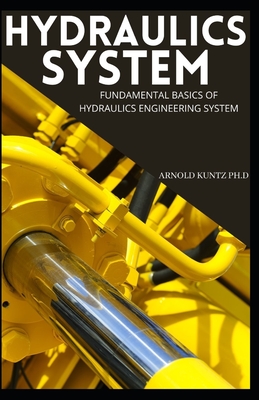Hydraulics System: Fundamental Basics of Hydraulics Engineering System

Hydraulics System: Fundamental Basics of Hydraulics Engineering System
Hydraulics is mechanical function that operates through the force of liquid pressure. In hydraulics-based systems, mechanical movement is produced by contained, pumped liquid, typically through cylinders moving pistons. Hydraulics is a component mechatronics, which combines mechanical, electronics and software engineering in the designing and manufacturing of products and processes. Simple hydraulic systems include aqueducts and irrigation systems that deliver water, using gravity to create water pressure. These systems essentially use water's own properties to make it deliver itself. More complex hydraulics use a pump to pressurize liquids (typically oils), moving a piston through a cylinder as well as valves to control the flow of oil. A log splitter is a single-piston hydraulic machine that uses a valve at either end of the cylinder that allows the pistons to be moved by the pressurized liquid, driving a wedge to force wood into smaller pieces and return to a home position. Force multiplication can be created by using a cylinder with a smaller diameter to push a larger piston in a larger cylinder. Often, there will be a number of pistons. Industrial equipment such as backhoes often use a number of cylinders to move different parts. Electronic controls are generally used for these more complicated setups on large, powerful equipment.Hydraulics are similar to pneumatic systems in function. Both systems use fluids but, unlike pneumatics, hydraulics use liquids rather than gasses. Hydraulics systems are capable of greater pressures: up to 10000 pounds per square inch (psi) vs about 100 psi in pneumatics systems. This pressure is due to the incompressibility of liquids which enables greater power transfer with increased efficiency as energy is not lost to compression, except in the case where air gets into hydraulic lines. Fluids used in hydraulics may lubricate, cool and transmit power as well. Pneumatics, being less multifaceted, require oil lubrication separately, which can be messy with air pressure. Pneumatics are simpler in design and to control, safer (with less risk of fire) and more reliable, partially as the compressibility of the gas-absorbing shock can protect the mechanism.Hydraulics (from Greek: Υδραυλική) is a technology and applied science using engineering, chemistry, and other sciences involving the mechanical properties and use of liquids. At a very basic level, hydraulics is the liquid coun
PRP: 92.92 Lei
Acesta este Prețul Recomandat de Producător. Prețul de vânzare al produsului este afișat mai jos.
83.63Lei
83.63Lei
92.92 LeiLivrare in 2-4 saptamani
Descrierea produsului
Hydraulics is mechanical function that operates through the force of liquid pressure. In hydraulics-based systems, mechanical movement is produced by contained, pumped liquid, typically through cylinders moving pistons. Hydraulics is a component mechatronics, which combines mechanical, electronics and software engineering in the designing and manufacturing of products and processes. Simple hydraulic systems include aqueducts and irrigation systems that deliver water, using gravity to create water pressure. These systems essentially use water's own properties to make it deliver itself. More complex hydraulics use a pump to pressurize liquids (typically oils), moving a piston through a cylinder as well as valves to control the flow of oil. A log splitter is a single-piston hydraulic machine that uses a valve at either end of the cylinder that allows the pistons to be moved by the pressurized liquid, driving a wedge to force wood into smaller pieces and return to a home position. Force multiplication can be created by using a cylinder with a smaller diameter to push a larger piston in a larger cylinder. Often, there will be a number of pistons. Industrial equipment such as backhoes often use a number of cylinders to move different parts. Electronic controls are generally used for these more complicated setups on large, powerful equipment.Hydraulics are similar to pneumatic systems in function. Both systems use fluids but, unlike pneumatics, hydraulics use liquids rather than gasses. Hydraulics systems are capable of greater pressures: up to 10000 pounds per square inch (psi) vs about 100 psi in pneumatics systems. This pressure is due to the incompressibility of liquids which enables greater power transfer with increased efficiency as energy is not lost to compression, except in the case where air gets into hydraulic lines. Fluids used in hydraulics may lubricate, cool and transmit power as well. Pneumatics, being less multifaceted, require oil lubrication separately, which can be messy with air pressure. Pneumatics are simpler in design and to control, safer (with less risk of fire) and more reliable, partially as the compressibility of the gas-absorbing shock can protect the mechanism.Hydraulics (from Greek: Υδραυλική) is a technology and applied science using engineering, chemistry, and other sciences involving the mechanical properties and use of liquids. At a very basic level, hydraulics is the liquid coun
Detaliile produsului










